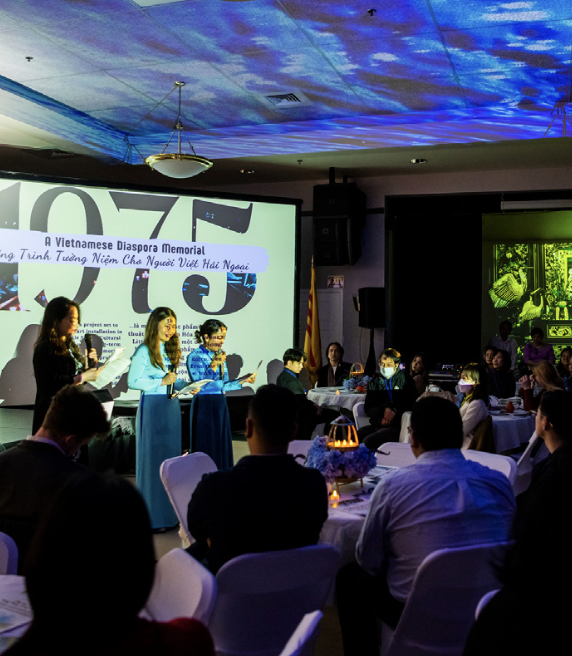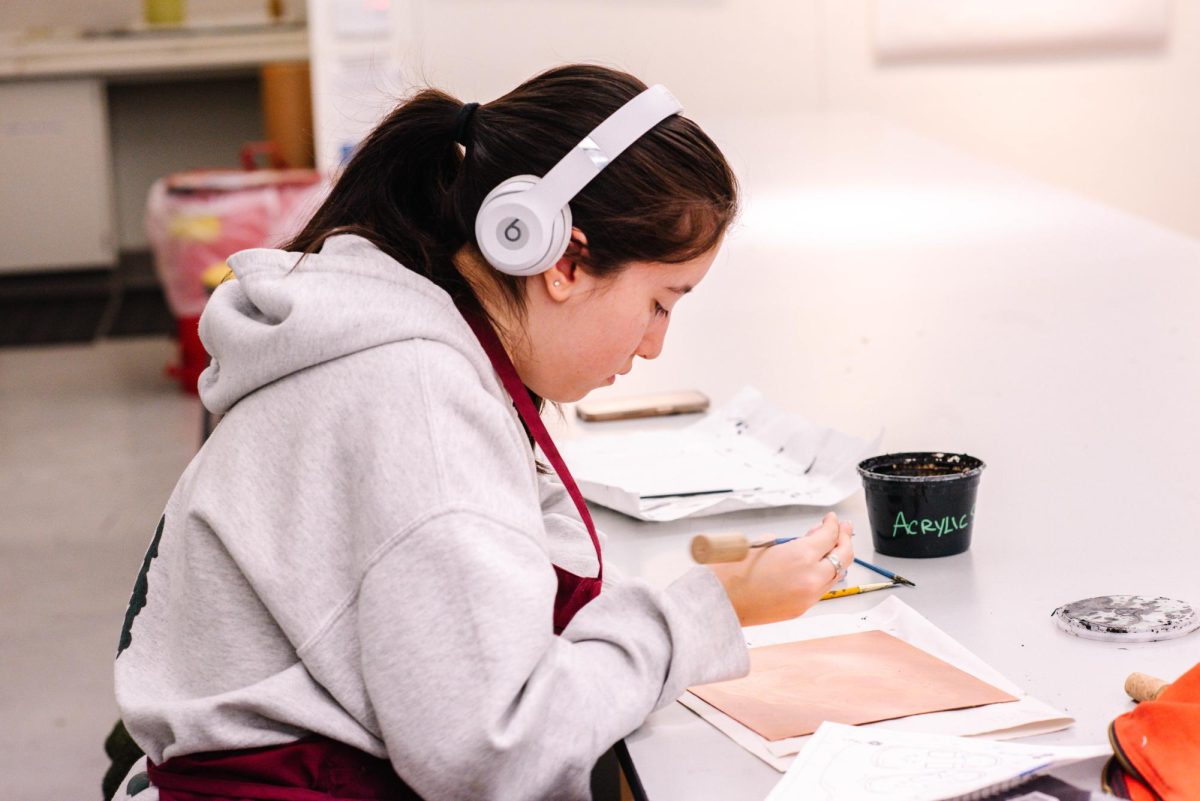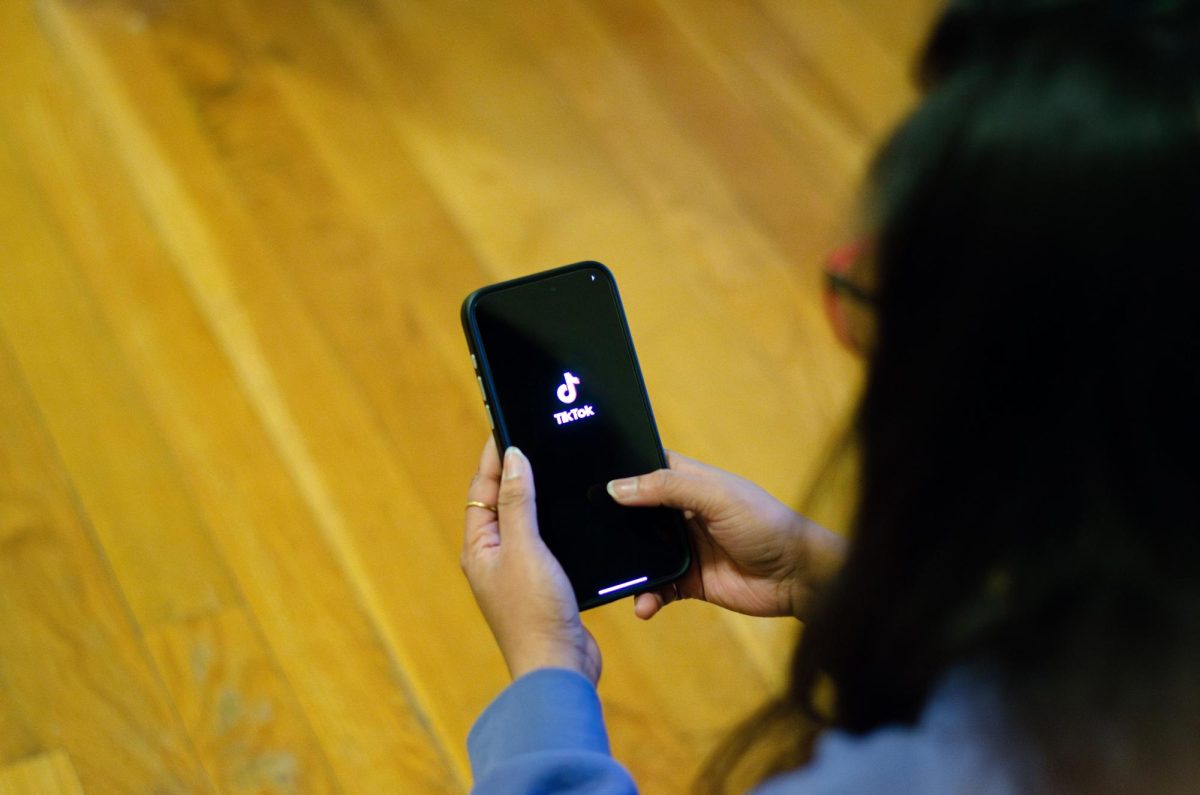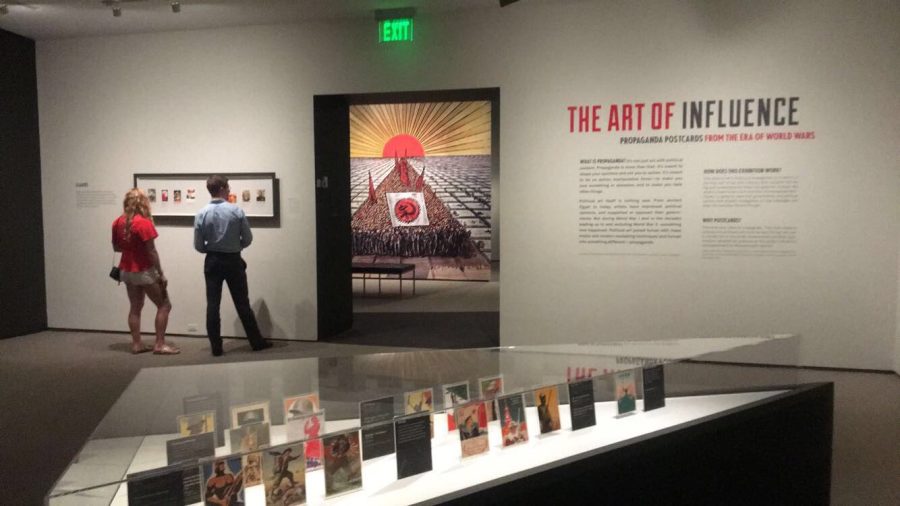“The Art of Influence: Propaganda Postcards from the Era of World Wars” gallery at the Museum of Fine Arts in Boston has been running since July 28, 2018 and is set to go until Jan. 21, 2019. “The Art of Influence” is the story of propaganda throughout the 20th century.
This two-room exhibit showcases the sly postcards handed out throughout World War I to the lead-up to World War II to during the war. Filled with information, the museum has an eight-minute film playing the allies and the axis sides’ use of propaganda, as well as a giant mural of a communist postcard.
When you first walk in, the propaganda and the importance of postcards are explained: “Postcards were ideal for propaganda. They were cheap to produce and purchase and could be sent through the mail or handed out on the street. Governments and other organizations adopted the postcard as the perfect vehicle for messages meant to influence public opinion.”
No country was safe from the use of propaganda: The United States, England, Russia, Germany, Italy, and Japan all used these methods to “shape [your] opinions and stir [you] to action.” Easily seen when put all together, the littlest things really make an impact.
Postcards of Adolf Hitler are placed next to famous-period film stars to show the parallels of posing and wording. All sides used “V” for victory in the art, even though the German word for victory is Sieg. Political art from the axis powers shows giant “V”’s destroying American boats while the allied powers had the “V” be a central image.
The us-vs-them mentality also fueled the hate between each side. “We’re not like them” and “they’re not like us” put each on a pedestal for the citizens to consume. In the gallery, a wall explains just that. “But propaganda about good people only works if there are bad people, too. ‘They are evil, foolish, grotesque, inhuman, and sometimes simply harmless and not worthy of concern.'”
Germany liked to poke fun at the English and their famous naval forces. Their postcards show German fighter planes, the superior method of war, flying over Britain’s John Bull standing on two naval boats. England’s version of Uncle Sam, John Bull appears on many of the political art, trying to sway both sides of whom to hate or whom to support.
As with one of the main causes of WWII, some German postcards have a stereotypical Jewish banker siding with the Americans. Though on many of them, Hitler is shown as Germany’s deliverer. In one from around 1938, he’s shown on a horse as a knight, and another from the 1930s is titled “Germany’s Saviors” and has him shaking hands with “long dead Otto von Bismark, who united Germany into one country in 1871, while a ghostly King Frederick II hovers in the background, visiting from 18th-century Prussia.”
Every picture of citizen support of the Nazi Party has a blonde-haired, blue-eyed girl or boy; mostly advertising the Hitler Youth program where, eventually in 1936, every non-Jewish child between the ages of 10 and 18 were required to join.
“The Art of Influence: Propaganda Postcards from The Era of World Wars” is an informative experience, relaying the message of no matter how small an action is, when brought forth through mass media, blind consumption of material can change the world.
The Art of Influence at the MFA
September 13, 2018



















































